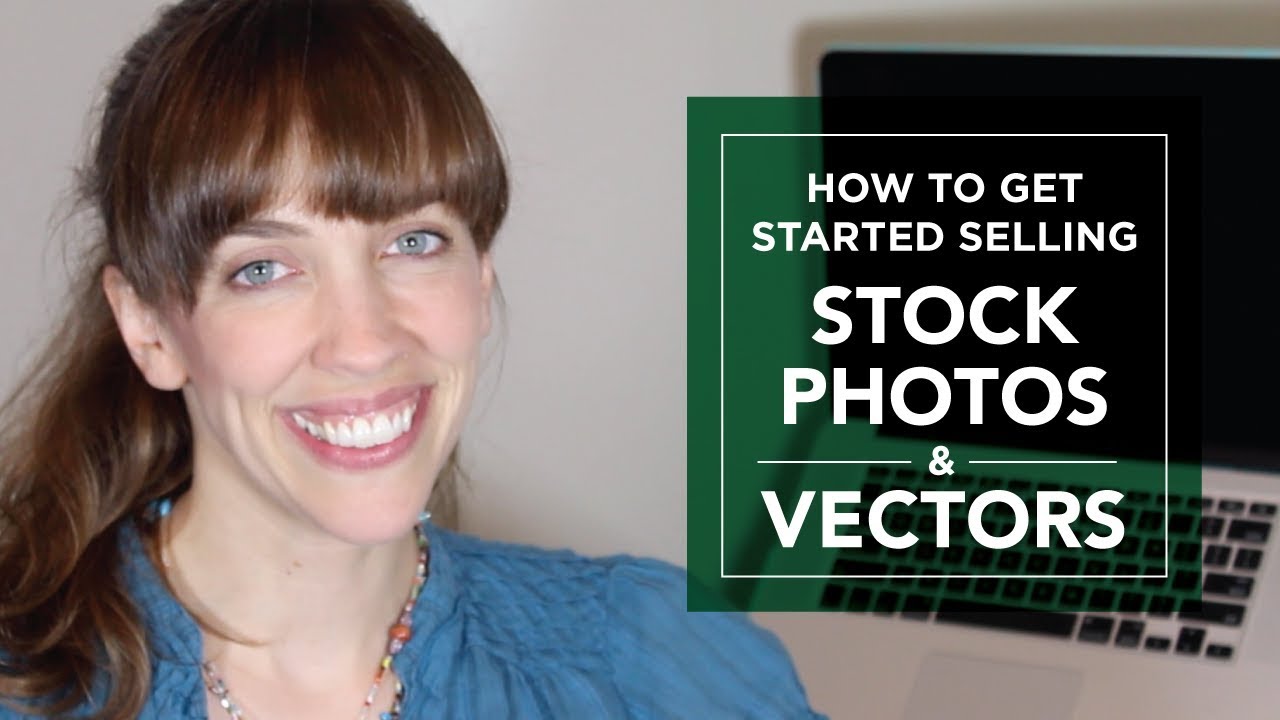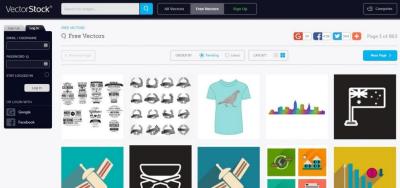Thinking about turning your passion for music into a steady stream of income? Selling music on Shutterstock might just be the perfect opportunity for you! Shutterstock is a popular platform that allows creators to share their work and earn passive income whenever someone downloads their music. Whether you’re a seasoned musician or just starting out, understanding how to navigate this platform can open doors to a global audience. In this post, we’ll walk through the essentials of selling your music on
Understanding Shutterstock’s Music Submission Guidelines

Before you hit that upload button, it’s crucial to get familiar with Shutterstock’s music submission guidelines. These rules ensure that your tracks meet quality standards and are suitable for licensing across various projects. Let’s break down what you need to know:
1. Audio Quality
- Format: Files must be in high-quality WAV format, 16-bit or 24-bit, with a sample rate of 44.1 kHz or higher.
- Clarity: Your recordings should be free of background noise, hum, or distortion. Clear, professional sound is essential.
- Length: Tracks should typically range from 30 seconds to 5 minutes, depending on the use case.
2. Content and Style
Shutterstock looks for a diverse range of music styles—think royalty-free, instrumental, ambient, corporate, or cinematic. But there are some restrictions:
- No copyrighted samples: Make sure your music is original or properly licensed.
- Appropriate content: Avoid explicit lyrics, offensive themes, or controversial topics.
- Consistency: Tracks should be cohesive and well-produced, fitting the intended mood or genre.
3. Metadata and Tagging
Accurate and descriptive metadata helps buyers find your music. Include relevant keywords, genres, mood descriptions, and instruments used. Be honest and precise—this increases the chances of your music being discovered.
4. Submission Process
Once your track meets these guidelines, you’ll upload it through Shutterstock’s contributor portal. They review submissions to ensure quality and compliance, which can take a few days. If approved, your music will be available for licensing worldwide, earning you passive income whenever it’s downloaded.
Key Takeaways
| Aspect | What to Remember |
|---|---|
| Audio Quality | High-quality WAV files, clear recordings, proper length |
| Content Style | Original, appropriate, and genre-specific |
| Metadata | Accurate, descriptive, and keyword-rich |
| Submission | Follow guidelines for review and approval process |
Getting these details right will set you on the path to success on Shutterstock. Remember, quality and clarity are king, and detailed metadata helps your music reach the right audience. Happy creating and submitting!
Preparing Your Music for Submission
Alright, so you’ve got some awesome tracks ready to go—now what? Preparing your music for submission to Shutterstock is all about making sure your files are polished, properly formatted, and easy for buyers to use. Think of it like getting your music into a store: it needs to look good, be easy to find, and ready for customers to purchase without any hiccups.
First things first: file formats. Shutterstock typically prefers high-quality audio files in WAV format because it preserves the best sound quality. Make sure your tracks are in 16-bit or 24-bit depth, and at a standard sample rate like 44.1 kHz or 48 kHz. Avoid compressed formats like MP3 or AAC for submissions—they may not meet the quality standards or could be rejected.
Next up: naming your files. Use clear, descriptive filenames that include relevant keywords. For example, instead of “Track1.wav,” try “upbeat-corporate-background.wav.” This helps your tracks stand out and makes it easier for clients to find what they’re looking for.
Metadata matters too! Fill out all the necessary information during upload: track title, artist name, genre, mood, instruments used, and keywords. Be honest and accurate—this not only helps with searchability but also builds trust with buyers. Think of metadata as the label on a product; the more descriptive, the better.
Additionally, consider creating a short, engaging description for each track. Highlight its mood, best use cases, or unique features. This can make your music more appealing and increase the chances of it being purchased.
Finally, double-check your tracks for any issues. Listen on different devices, ensure there are no background noises, sudden volume jumps, or glitches. Clean, professional-sounding tracks will have a better shot at selling and earning you passive income over time.
Creating High-Quality Tracks That Sell Well
Now that your files are prepped and ready, let’s talk about creating music that actually sells. It’s one thing to produce music you love, but if you want your tracks to generate passive income, they need to appeal to a broad audience and meet market demand.
Start by understanding your target market. Think about what buyers are typically searching for—background music for videos, corporate presentations, YouTube content, or even relaxing meditation tracks. Research popular genres and styles that are in demand. Browse Shutterstock’s top-selling tracks to get a feel for what’s trending.
Focus on high production quality. Use good equipment, clean mixes, and balanced mastering. Clear, professional-sounding tracks are more likely to be purchased and reused. If you’re not an expert in mixing and mastering, consider investing in tutorials or hiring a professional for the final polish.
Keep your tracks versatile and loop-friendly. Many buyers look for music they can loop seamlessly or use as a background without distraction. Creating tracks with a steady tempo and minimal abrupt changes makes them more adaptable for various projects.
Create a diverse catalog. Offer a variety of styles, moods, and genres—think upbeat, calm, inspirational, cinematic, etc. The broader your range, the more opportunities you have to attract different buyers.
Pay attention to trends and seasonal needs. For example, holiday-themed music around Christmas, or energetic tracks for summer campaigns. Updating your portfolio regularly with fresh, relevant content keeps your profile active and appealing.
| Tips for Creating High-Quality Tracks | Why It Matters |
|---|---|
| Use professional equipment and software | Ensures clarity and polish, making your tracks competitive |
| Focus on clear, balanced mixing | Prevents distractions and enhances listener experience |
| Create versatile and loopable music | Increases usability for buyers in various projects |
| Offer a variety of moods and genres | Appeals to a wider audience and increases sales opportunities |
| Stay updated with trends | Helps your music remain relevant and in demand |
Remember, creating high-quality, in-demand music is an ongoing process. Keep learning, experimenting, and refining your craft. The more you produce top-notch tracks that meet market needs, the more passive income you’ll generate on Shutterstock over time. Happy composing!
Uploading Your Music and Optimizing Metadata for SEO
Alright, so you’ve got your music ready to go — now what? Uploading your tracks to Shutterstock is pretty straightforward, but to make sure your music gets seen and sold, you need to pay attention to the details, especially metadata. Think of metadata as the label on your product; it helps potential buyers find your music when they search.
First things first, prepare your files. Shutterstock typically accepts high-quality audio formats like WAV or MP3. Ensure your files are clean, well-mixed, and mastered—this not only improves the listening experience but also boosts your credibility as an artist.
Steps to Upload Your Music:
- Log into your Shutterstock Contributor account.
- Click on the “Upload” button and select your audio files.
- Fill out the required information, including title, description, and tags.
- Choose the appropriate category and license options.
- Review everything and submit for review.
Optimizing Metadata for SEO
Now, here’s the secret sauce: metadata optimization. When someone searches for “uplifting corporate background music” or “relaxing piano track,” you want your music to appear at the top of the results. How? By using strategic keywords and detailed descriptions.
Here are some tips to optimize your metadata:
- Title: Make it descriptive and specific. Instead of “Music Track 1,” try “Calm Piano Background Music for Meditation.”
- Description: Write a clear, engaging summary that highlights the mood, instruments, and potential uses.
- Tags: Use relevant keywords. Think about what buyers might search for, such as “corporate,” “relaxing,” “upbeat,” “instrumental,” etc.
- Categories: Select the most accurate category; this helps Shutterstock categorize your music correctly.
Remember, the goal is to make your music discoverable. Avoid keyword stuffing, but do be thorough and precise. Well-optimized metadata can dramatically increase your chances of making sales and earning passive income.
Promoting Your Music to Increase Sales and Passive Income
Uploading your music is just the first step. To truly boost your passive income, you need to actively promote your tracks. Think of promotion as planting seeds—more exposure means more potential buyers, which leads to more sales.
Here are some effective ways to promote your music:
Build a Personal Brand
Create a website or a dedicated social media presence where you showcase your work. Share behind-the-scenes content, updates on new tracks, or even free samples. When people see your passion and consistency, they’re more likely to purchase your music.
Leverage Social Media Platforms
- Instagram & TikTok: Share short clips of your music, behind-the-scenes moments, or tutorials.
- Facebook & LinkedIn: Join groups related to media production, YouTube creators, or filmmakers. Share your tracks where relevant.
- YouTube: Create videos using your music in the background. Embed your Shutterstock links in descriptions.
Collaborate with Creators and Content Producers
Reach out to YouTubers, videographers, and other content creators. Offer to license your music for their projects. As they use your tracks, it exposes your work to new audiences and can lead to more sales.
Utilize Email Newsletters
If you have an email list, regularly update your subscribers with new releases or exclusive freebies. This keeps your audience engaged and eager to purchase your latest tracks.
Participate in Communities and Forums
Engage in music production forums, Reddit communities, or niche Facebook groups. Sharing your journey, asking for feedback, and building relationships can open doors for collaborations and sales opportunities.
Offer Freebies or Demo Tracks
- Providing free samples can entice potential buyers to check out your full tracks.
- Use these freebies as a lead magnet on your website or social media.
Remember, consistent promotion combined with high-quality, well-optimized music listings can turn your Shutterstock portfolio into a steady stream of passive income. Keep engaging, keep sharing, and your music will find its audience!
Tips for Consistently Earning Passive Income from Your Music
So, you’re interested in turning your music into a steady stream of passive income on Shutterstock? That’s a fantastic goal! The key to consistent earnings isn’t just about uploading a handful of tracks and hoping for the best — it’s about strategic planning, quality, and persistence. Here are some tips to help you build a reliable income stream from your music.
1. Focus on Quality and Versatility
First impressions matter. Make sure your tracks are professionally produced, well-mixed, and mastered. High-quality music is more likely to be licensed and used in professional projects. Also, create a variety of styles and moods — from upbeat to mellow, cinematic to corporate — so you can cater to a broader range of buyers.
2. Consistent Uploads
Regularly adding new tracks keeps your portfolio fresh and increases your chances of being discovered. Set a schedule — whether it’s weekly or monthly — and stick to it. The more content you have, the higher the chance that your music will be licensed repeatedly over time.
3. Optimize Your Metadata
Think of metadata (titles, tags, descriptions) as your music’s GPS. Use relevant keywords that potential buyers might search for, but avoid keyword stuffing. Be descriptive and specific—include genres, moods, instruments, and use cases (e.g., “background music for videos” or “corporate presentation soundtrack”). Proper optimization boosts your music’s visibility.
4. Monitor Trends and Demands
Stay updated on what types of music are in demand. Browse Shutterstock’s trending sections or popular categories to get inspiration. Creating tracks aligned with current trends, like relaxing music for wellness or energetic tunes for fitness videos, can lead to more sales.
5. Engage with the Community
Join forums or social media groups dedicated to stock music. Share your experiences, ask for feedback, and learn from others. Sometimes, collaborative projects or feedback can improve your work and open new opportunities.
6. Be Patient and Persistent
Building a passive income stream takes time. Don’t get discouraged if your tracks don’t sell immediately. Keep uploading, refining your work, and promoting your portfolio. Over months and years, your library will grow, and so will your earnings.
7. Track Your Performance
Use Shutterstock’s analytics tools to see which tracks perform best. Notice patterns—are certain genres selling more? Use this data to guide your future creations. Adjust your strategy based on what works and what doesn’t.
Remember, earning passive income from music on Shutterstock isn’t about quick wins; it’s about building a sustainable catalog that keeps earning over time. Stay consistent, keep improving, and enjoy the journey of sharing your music with the world!
Common Mistakes to Avoid When Selling Music on Shutterstock
While sharing your music on Shutterstock can be lucrative, there are some pitfalls you’ll want to steer clear of to maximize your success—and avoid frustration. Let’s go over some common mistakes and how to dodge them.
1. Ignoring Quality Control
One of the biggest mistakes is uploading tracks that aren’t professionally produced. Poorly mixed, poorly mastered, or generic-sounding music can turn buyers away. Always ensure your music sounds polished and professional. Remember, buyers want tracks that fit seamlessly into their projects.
2. Overusing or Misusing Tags and Metadata
Stuffing your metadata with irrelevant keywords may seem like a good idea, but it can hurt your visibility and credibility. Be honest and accurate with your descriptions. Use relevant tags that truly describe your music to attract the right buyers.
3. Not Covering a Broad Range of Styles
If you only produce one genre or mood, you limit your potential sales. Diversify your portfolio to include different genres, tempos, and moods. This way, you appeal to a wider audience and increase the chance of licensing your tracks multiple times.
4. Failing to Keep Up with Trends
Sticking to what you know without considering market trends can make your music less appealing. Regularly explore what’s trending in stock media—such as cinematic, lo-fi, corporate, or ambient sounds—and adapt your creations accordingly.
5. Not Using Clear and Descriptive Titles
A vague or misleading title can reduce your track’s discoverability. Be descriptive and specific—include genre, mood, and intended use. Clear titles help buyers find your music quickly.
6. Ignoring Licensing and Legal Considerations
Ensure your music is original and free of copyrighted samples or unauthorized elements. Using copyrighted material can lead to takedowns or legal issues, which can damage your reputation and earnings.
7. Giving Up Too Soon
Building a passive income stream takes time. Many new sellers expect instant results. If your tracks don’t sell much initially, don’t get discouraged. Keep uploading, improving your work, and promoting your portfolio. Persistence pays off!
By avoiding these common mistakes, you’ll set yourself up for a more successful and sustainable experience selling music on Shutterstock. Remember, patience and professionalism are your best friends in this game. Keep learning, keep refining, and your passive income will grow steadily over time.
Conclusion and Next Steps for Monetizing Your Music
Successfully selling your music on Shutterstock offers a fantastic opportunity to generate passive income and reach a global audience. To maximize your earnings, ensure your music is high-quality, properly tagged, and aligned with popular themes or trends. Remember, consistency and professionalism are key—regularly uploading new tracks can help build your portfolio and attract more buyers.
Next steps include:
- Optimizing your submissions: Use relevant keywords and descriptive titles to improve discoverability.
- Understanding licensing options: Familiarize yourself with Shutterstock’s licensing models to choose the best fit for your music.
- Engaging with the community: Join forums and social media groups dedicated to stock music creators for tips and support.
- Monitoring your analytics: Track which tracks perform best and refine your future uploads accordingly.
Additionally, consider expanding your reach by exploring other stock platforms like Adobe Stock, Pond5, or AudioJungle. Diversifying your distribution channels can amplify your passive income streams and ensure a steady flow of revenue. Remember, building a successful portfolio takes time and persistence, but with dedication, your music can become a reliable source of income while allowing you to focus on your creative passions.


